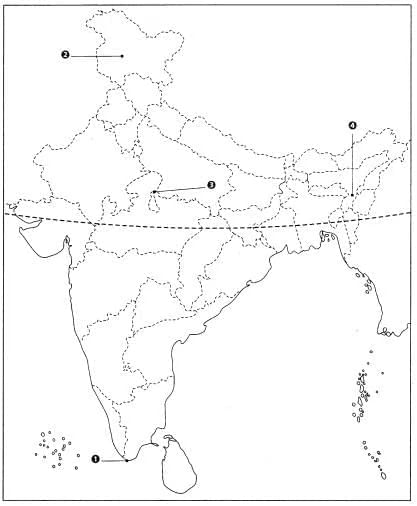Unit Test: Life Lines of National Economy | Social Studies (SST) Class 10 PDF Download
Time: 1 Hour
M.M.: 30
Instructions: Attempt all questions.
- Question numbers 1 to 5 carry 1 mark each.
- Question numbers 6 to 8 carry 2 marks each.
- Question numbers 9 to 11 carry 3 marks each.
- Question numbers 12 & 13 carry 5 marks each.
Q1. Which organization is responsible for constructing and maintaining border roads in India? (1 marks)
a) Central Public Works Department (CPWD)
b) National Highway Authority of India (NHAI)
c) Border Roads Organisation (BRO)
d) State Public Works Department (PWD)
Q2. Which of the following is NOT a National Waterway in India? (1 marks)
a) Ganga River (Allahabad to Haldia)
b) Brahmaputra River (Sadiya to Dhubri)
c) Mandavi River
d) West-Coast Canal in Kerala
Q3. Which port is known as the largest port with a spacious natural harbor? (1 marks)
a) Kandla Port
b) Mumbai Port
c) Chennai Port
d) Paradip Port
Q4. What is the primary role of pipelines in India’s transport network? (1 marks)
a) Transporting passengers
b) Carrying crude oil, petroleum products, and natural gas
c) Delivering food grains to markets
d) Connecting rural roads to highways
Q5. Which mode of transport is most suitable for carrying heavy and bulky goods? (1 marks)
a) Airways
b) Railways
c) Waterways
d) Roadways
Q6. Explain the importance of transport in the economy of a country. (2 marks)
Q7. What are the advantages of roadways over railways in India? (2 marks)
Q8. Describe the role of the Indian postal network in communication. (2 marks)
Q9. What is the significance of the Golden Quadrilateral Super Highways? (3 marks)
Q10. Discuss the challenges faced by road transportation in India and suggest measures to address them. (3 marks)
Q11. Explain the role of railways in India’s economy and the challenges they face. (3 marks)
Q12. Analyze the importance of international trade and tourism in India’s economic growth. (5 marks)
Q13: Features are marked by numbers in the given political map of India. Identify these features with the help of the following information and write their correct names on the lines marked in the map. (5 marks)
1. Southern terminal of North-South Corridor
2. The northern terminal of North-South Corridor
3. The place where North-South and East-West Corridor meet
4. The easternmost point of East-West Corridor
|
95 videos|815 docs|79 tests
|
FAQs on Unit Test: Life Lines of National Economy - Social Studies (SST) Class 10
| 1. What are the main components of the national economy as discussed in the unit on Life Lines of National Economy? |  |
| 2. How does transportation contribute to the national economy? |  |
| 3. What role does communication play in the Life Lines of National Economy? |  |
| 4. Why is the agriculture sector considered the backbone of the Indian economy? |  |
| 5. What impact do trade and foreign exchange have on the national economy? |  |
















